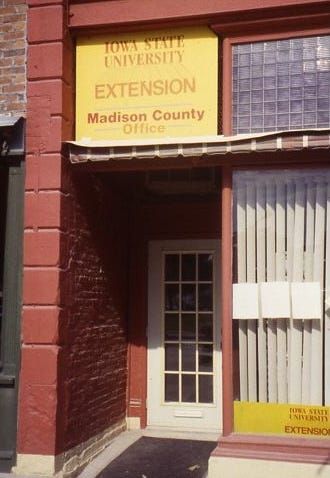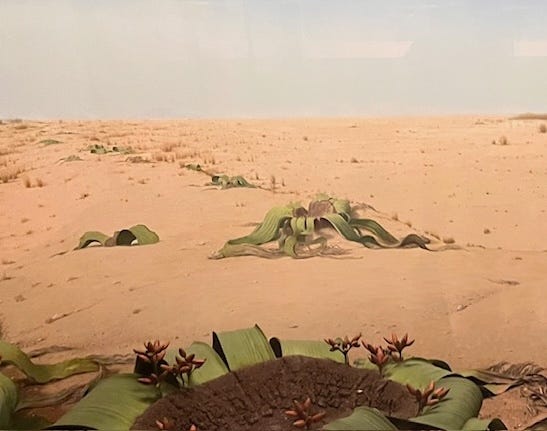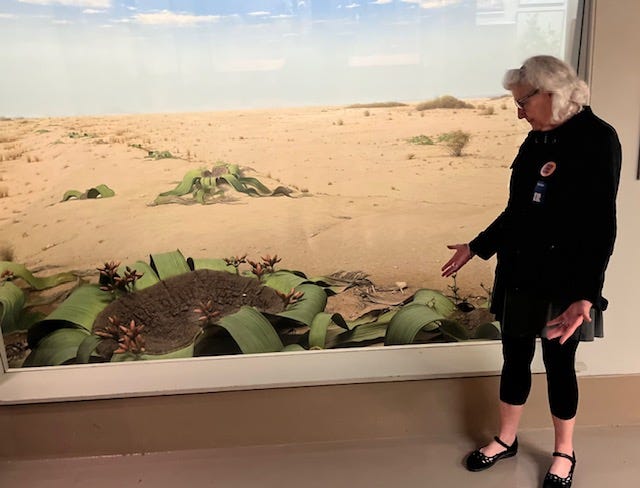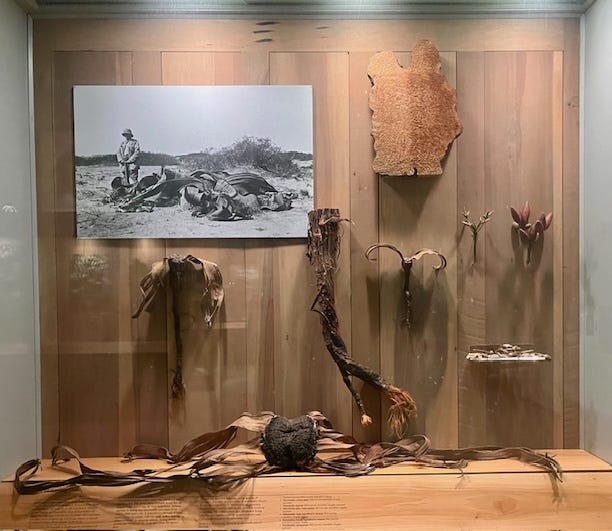In the past, like most visitors to the Field Museum in Chicago, I stuck to showy exhibits like “Inside Ancient Egypt,” and “The Hall of Gems,” barely aware “Plants of the World” existed—that is, until I completed Master Gardener training and became interested in every growing thing.

In the back room of the Iowa State University Extension Office on the east side of Winterset’s town square, each week Mark and I watched horticulture professors lecture via some sort of cable optics system. (This was decades before Zoom or even Skype).
We learned that dirt is simply soil in the wrong place and that there’s a difference between tall fescue and, well . . . other fescues. To stress the importance of knowing the mature size (height and width) of a shrub before digging the hole, one teacher showed us a photo I’ve never forgotten—a pair of evergreens planted so close to a sidewalk that, fully grown, they completely obscured a home’s front door.
At The Field, the many rooms that make up “Plants of the World” contain models of some 300 plants, representing nearly a third of all plant families on Earth. The earliest models—meticulous, lifelike recreations of their living counterparts—were made in 1909, created by an acclaimed denture maker (wow!) from latex, glass, wire, and wax, according to The Field’s website.
The day Mark and I visited “Plants of the World” for the first time, we meandered, awestruck, from one room of grand wooden display cases to the next, viewing miniature models of chocolate, rice, and wine production under cozy, subdued museum lighting.
I love them all, but my favorite will always be welwitschia mirabilis, the saddest plant on Earth. The placard for this rare African desert flora, the only extant genus of its family (so sad!), reads like a passage from an Edith Wharton novel.
The youngest plant, with its trunk just a few inches high, sends out two long leaves that grow continuously through the centuries of the plant’s long life. As the trunk enlarges, the leaves split into segments and are torn by the desert winds . . . male and female flowers grow on separate plants . . . the seeds are dispersed by the wind and require water to germinate, but sometimes ten years pass between rainfalls . . .

Welwitschia is named for Austrian botanist Friedrich Welwitsch, the first European to describe the plant, documenting it in Angola in 1859. He wrote, "I could do nothing but kneel down . . . and gaze at it, half in fear lest a touch should prove it a figment of the imagination."

The narrative pathos continues in the signage beneath an adjacent display case.
Although it looks like a trash heap, the welwitschia is a woody plant. Its long life in the southwest African desert begins as a carrot-like root with two leaves. These are the only two leaves the plant will ever have, but after being ripped to shreds for years by desert winds, there appear to be more . . . Carbon-14 dating has shown one specimen to be nearly 2000 years old.

I hesitate to call myself a Master Gardener, though I completed the course work as well as the required community service. My husband Mark Davis doesn’t toot his Master Gardener horn, either, but he knows how to properly plant a rosebush.
I’m a proud member of the Iowa Writers’ Collaborative, a collection of over seventy(!) professional journalists, writers, and songwriters. Here’s the roster of our writers. Please shop around and sample a few. When you fall in love with one of the writers’ work, think about transitioning to a paid subscription.







"Dirt is simply soil in the wrong place". I love that! Gorgeous rosebush! I gave up on roses a long time ago. Couldn't seem to ever get near them without shedding a lot of blood LOL :)